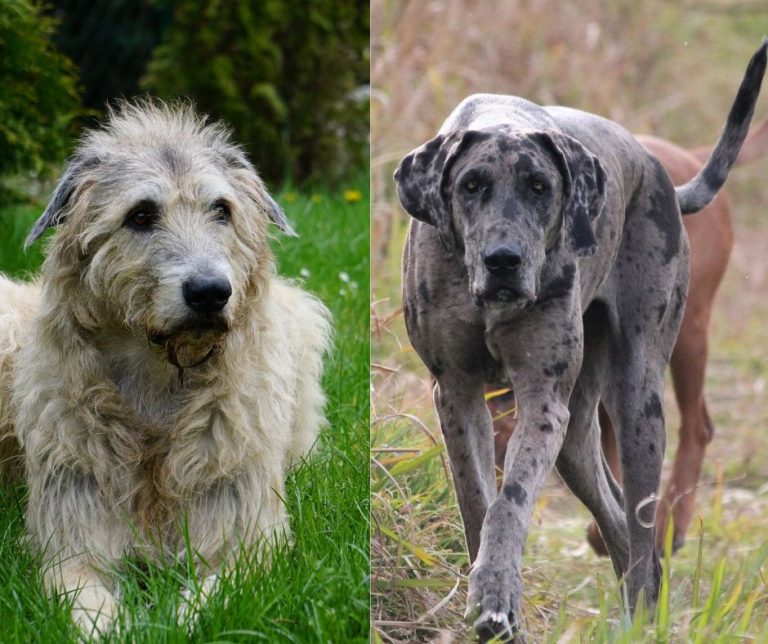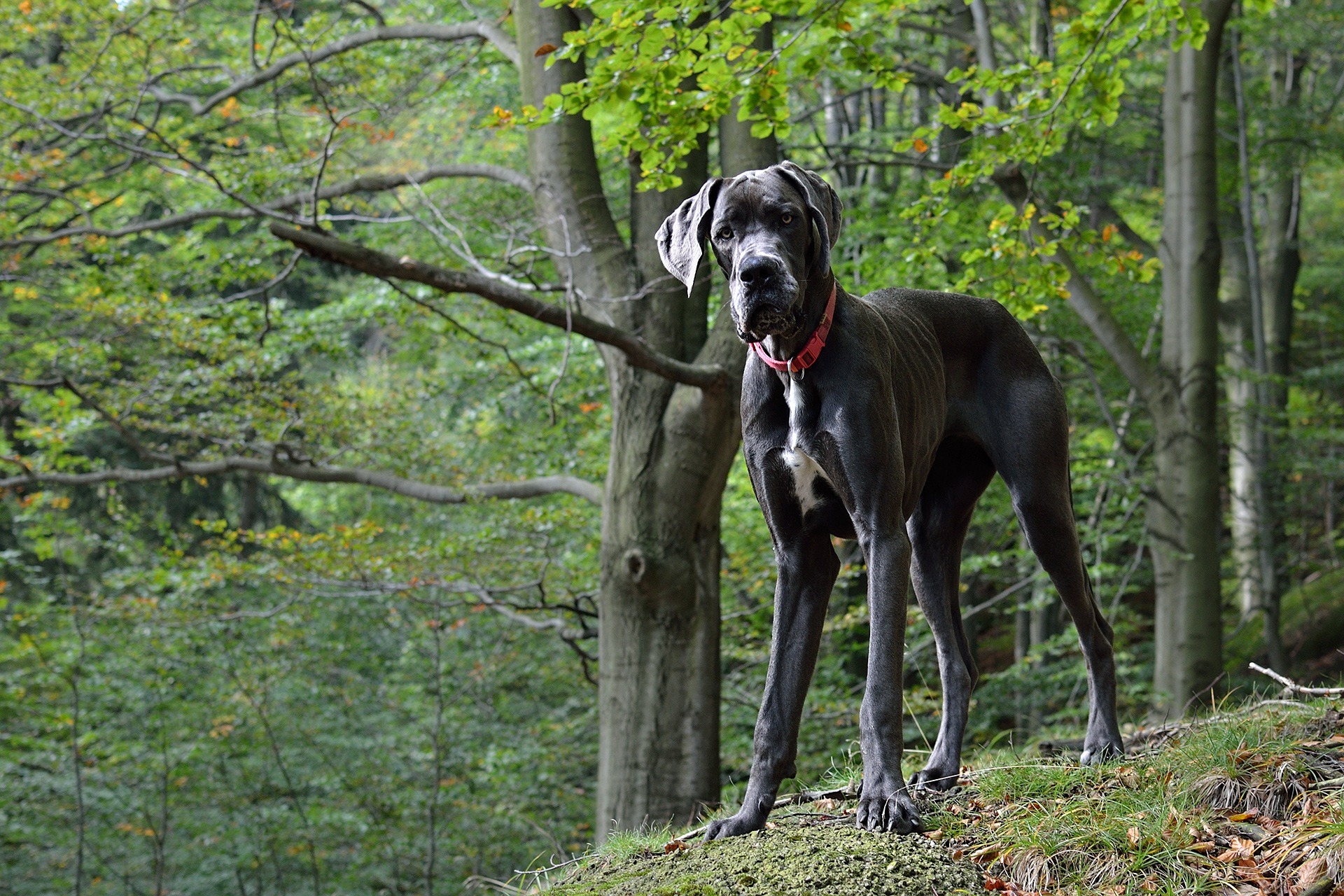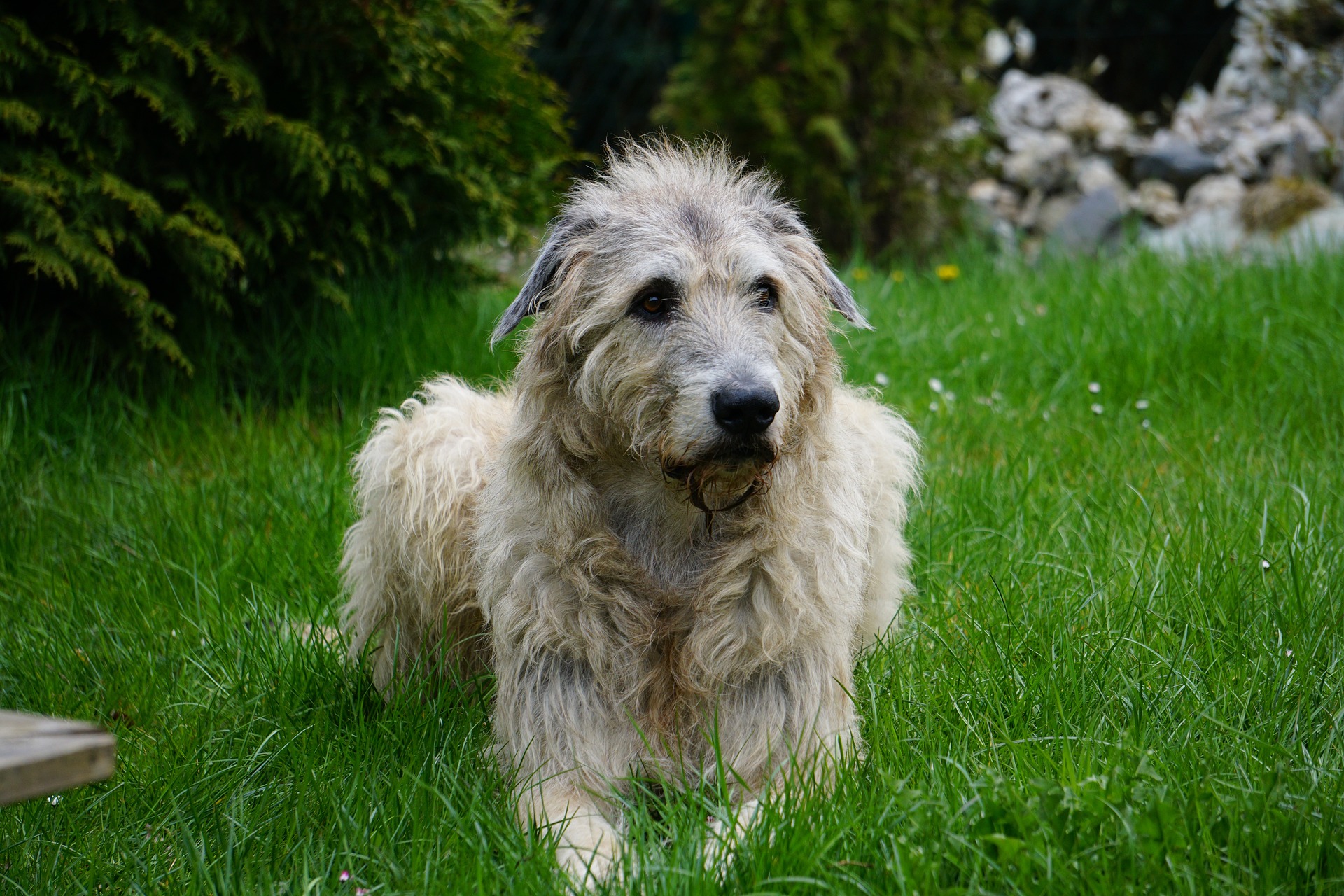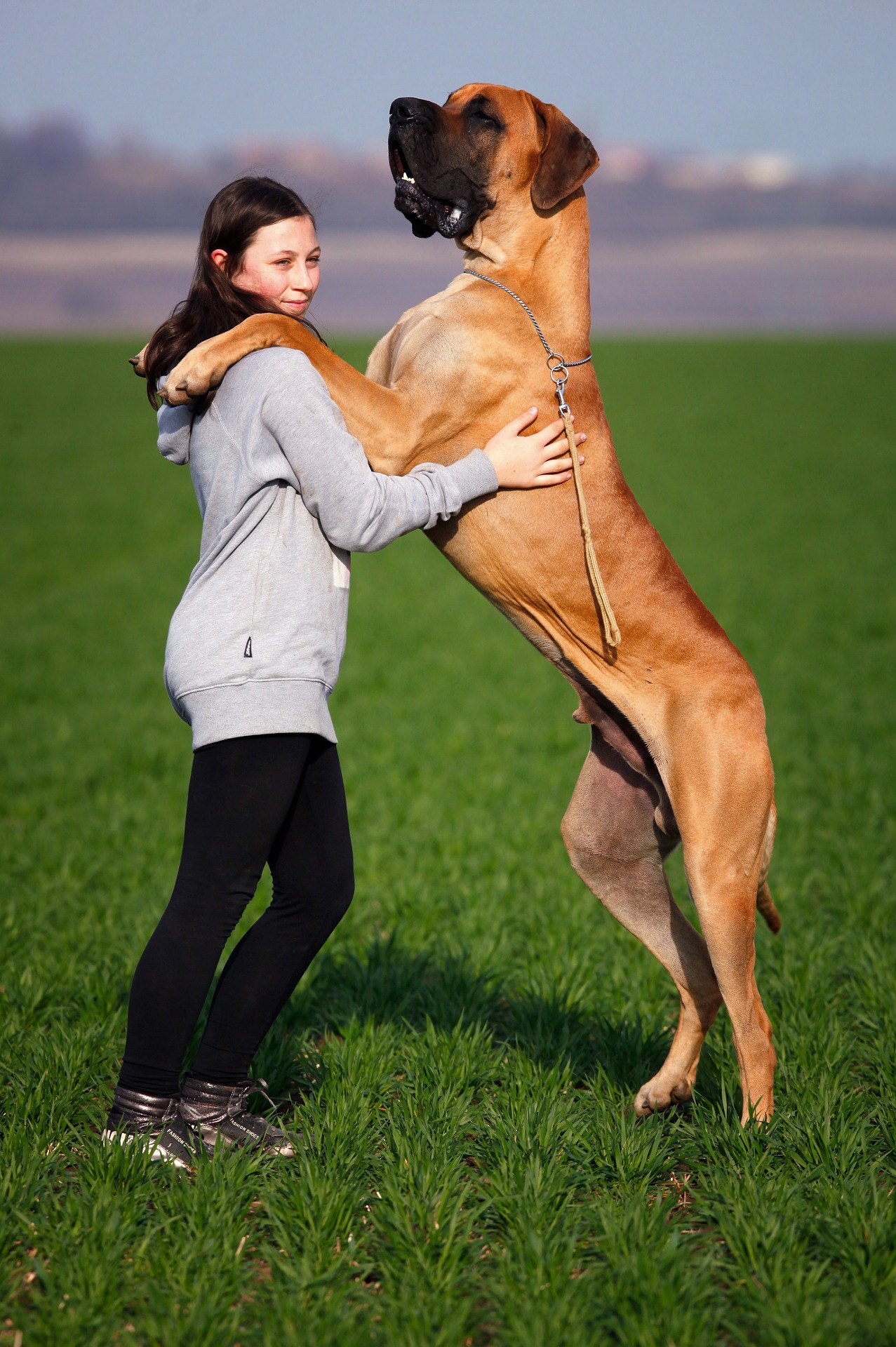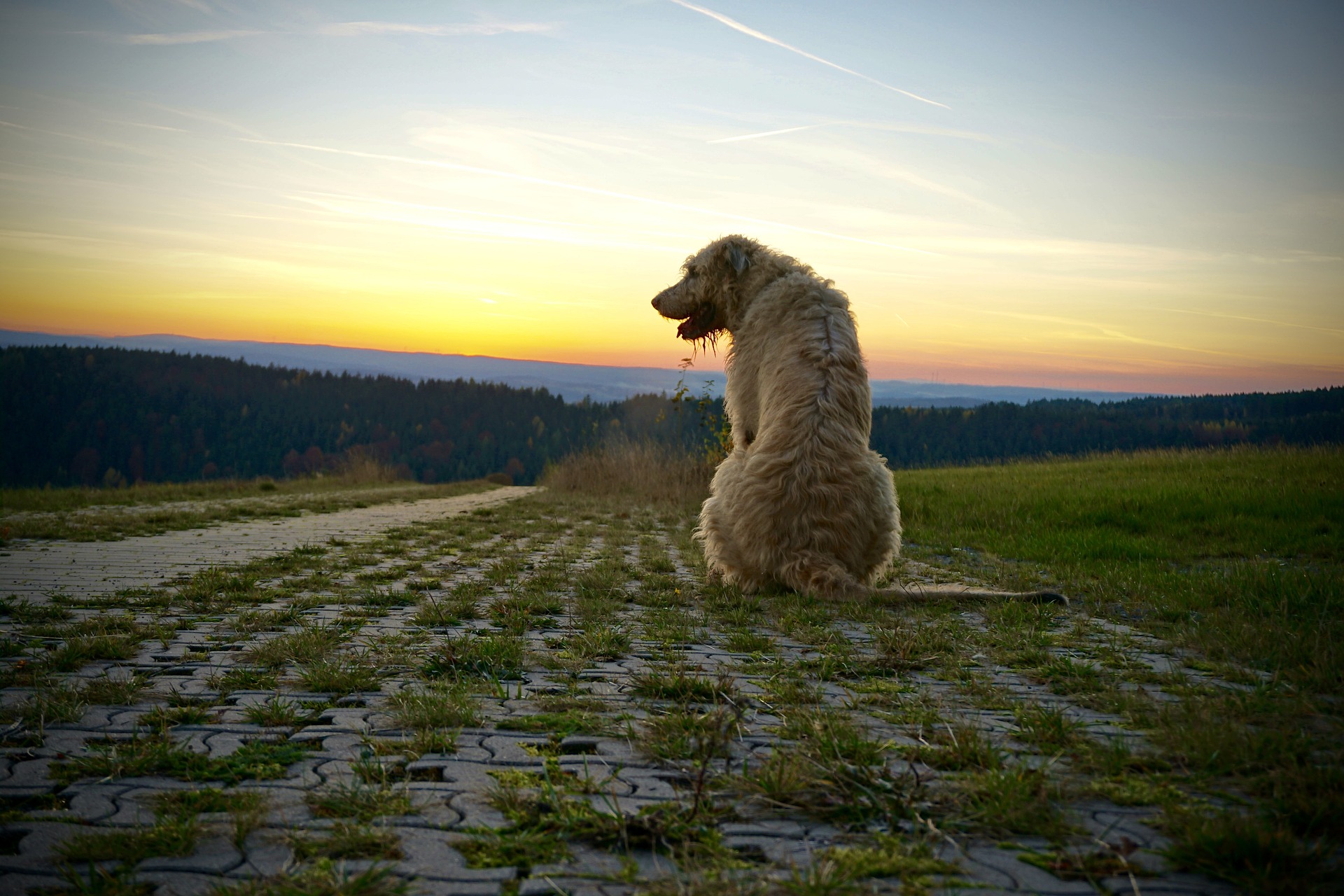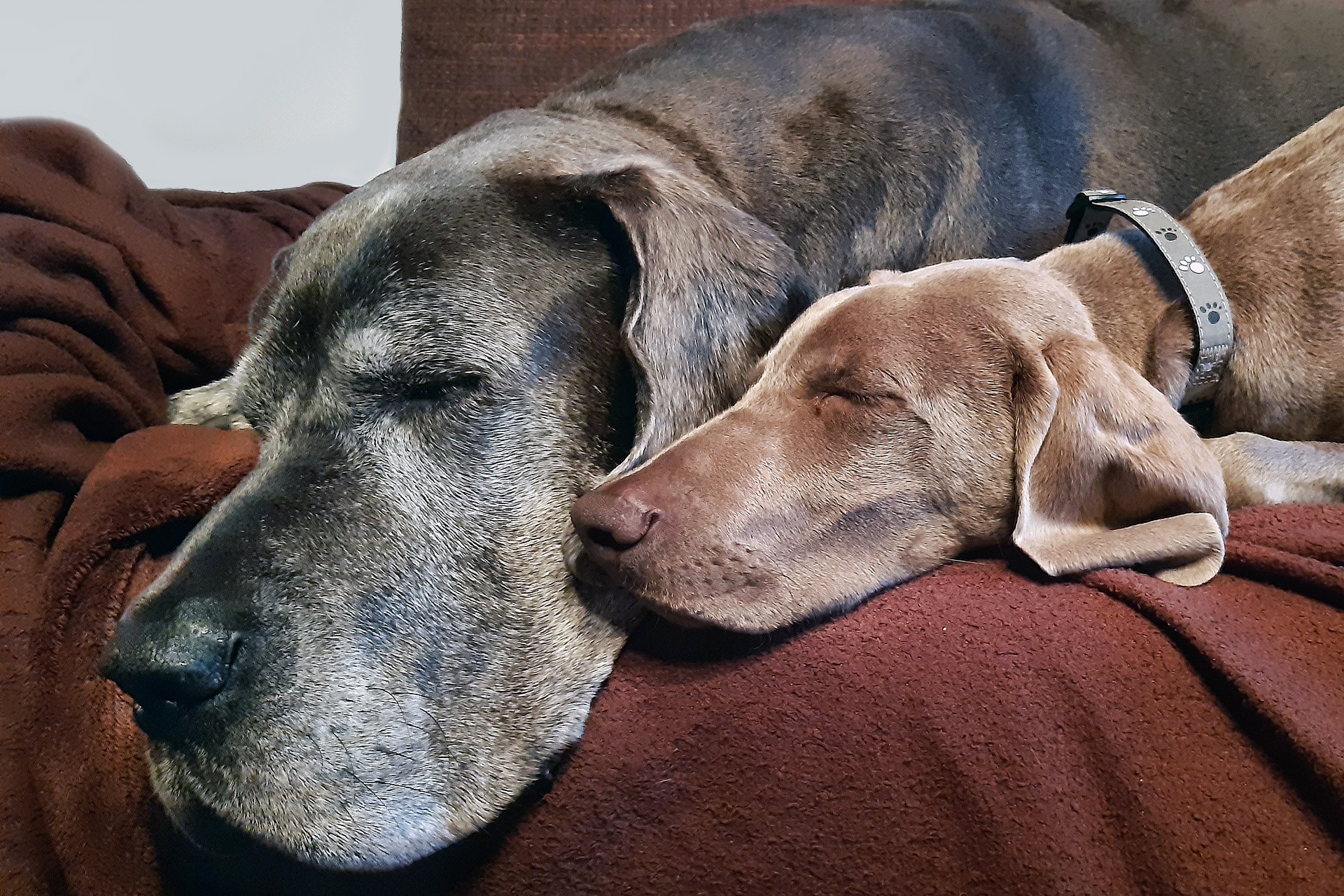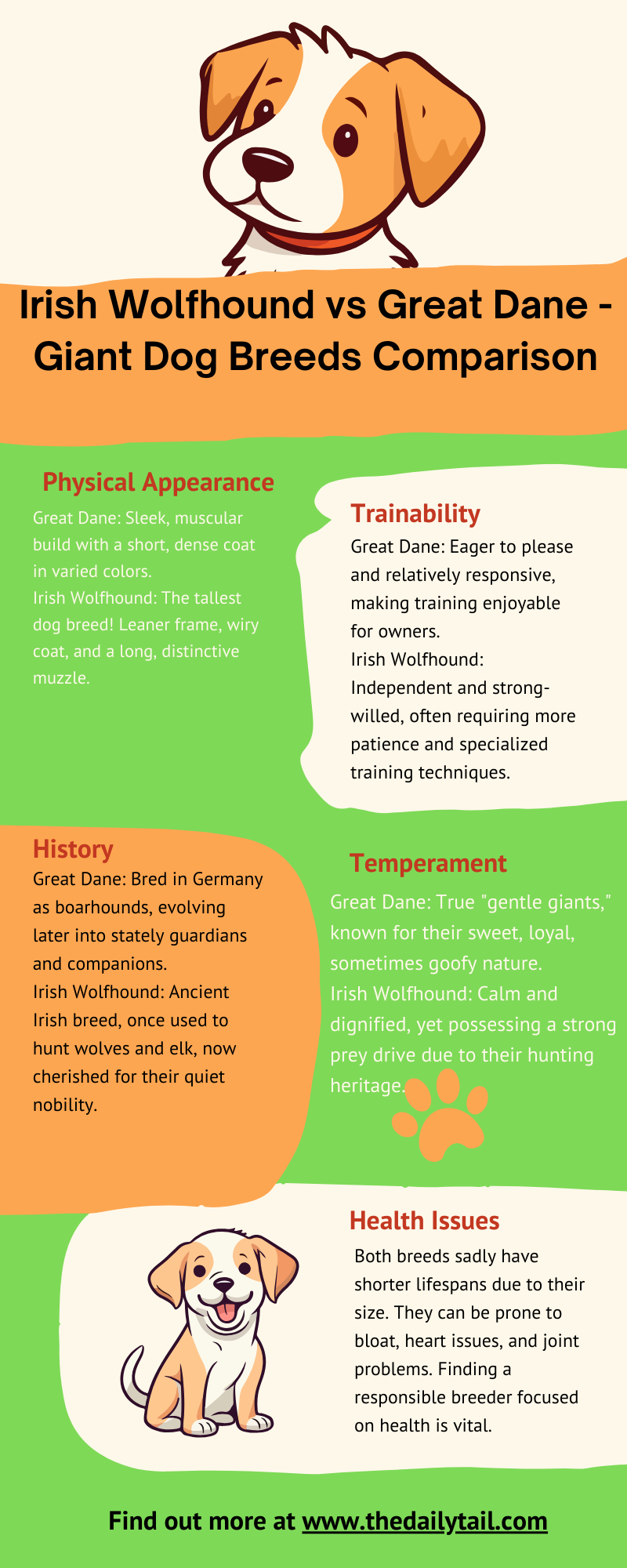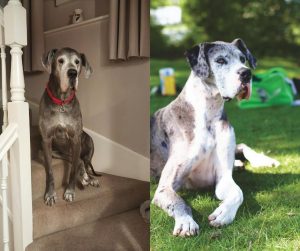Today, we will take a look at the Irish Wolfhound vs Great Dane size comparison. We often like to compare one dog breed to another, but today, we will look specifically at the size difference.
Key Takeaways
- The Irish Wolfhound and Great Dane are similar in height but can differ in weight, with Great Danes possibly being heavier
- Both breeds are known for their gentle nature despite their large size, earning the title “gentle giant”
- Proper care, training, and understanding of their physical and temperamental characteristics are essential for living with these giant breeds
Breed History and Characteristics
Exploring the Irish Wolfhound and Great Dane reveals a fascinating journey through history and a tapestry of traits that define these gentle giants. They both share a majestic stature and a warm demeanor, making them beloved dog breeds around the world.
Irish Wolfhound Heritage
The Irish Wolfhound is an ancient dog breed, initially bred in Ireland to track and hunt wolves. They are the epitome of a sighthound—tall, swift, and with a gaze that’s ever-watchful. With a history that possibly dates back to Roman times, they were regarded as war dogs and hunting companions, revered for their courage and loyalty.
- Height: Typically stands between 28 and 35 inches tall
- Traits: Known for their calmness, intelligence, and strength
Great Dane Origins
Great Danes have their roots deeply embedded in history as mastiffs used by German nobility to protect estates and hunt wild boar. Their imposing size belied their sociable nature, which made them excellent companions. Over time, these dogs became known for their grace and became more associated with nobility.
- Height: Stands at an average of 28 to 32 inches tall
- Traits: Expresses a friendly, dependable, and patient character
Defining Traits
Both dog breeds stand out not just in size but in their temperament. Despite their historical roles that required fearlessness, today they are better known for their gentle personalities. These dogs may seem intimidating due to their size, but they are, in essence, compassionate companions.
- Irish Wolfhound: Slightly taller on average, with a coat that’s rough and ready for outdoor pursuits
- Great Dane: A bit shorter but robust, often found with a smooth, glossy coat that accentuates its elegant build
With these breeds, size does indeed matter—but so does the heart. Digging into the past of the Irish Wolfhound and Great Dane not only reveals their storied histories but also showcases their similar dispositions as kind-hearted behemoths of the dog world.
Physical Attributes
When comparing the Great Dane and Irish Wolfhound, one quickly notices their impressive statures. Both are large dog breeds, with the Wolfhound often towering just a bit above the Dane, marking them as one of the tallest of all canine companions. They both share a majestic appearance that reflects their strength and gentle nature. Let’s take a look at some of the breed standard set by the American Kennel Club.
Size Comparison
Irish Wolfhound:
- Height: 32 – 35 inches
- Weight: 115 – 180 pounds
Great Dane:
- Height: 28 – 34 inches
- Weight: 110 – 175 pounds
Notable Detail: The Irish Wolfhound typically stands taller than the Great Dane but both breeds can be quite close in weight, making them both classified as giant dogs. Yet, when it comes to record holders, the Great Dane dog breed is the tallest dog in the world. Zeus, a Great Dane from Michigan, United States, stood at 44 inches in 2011.
Coat and Appearance
Irish Wolfhound:
- Coat Type: Rough and wiry
- Coat Color: Variety including gray, brindle, and wheaten
Great Dane:
- Coat Type: Short and smooth
- Coat Color: Diverse, with fawn, brindle, blue, black, harlequin, and mantle
Visual Appeal: They both exude a regal quality, but the Irish Wolfhound’s rough coat gives it a rugged look in contrast to the Great Dane’s sleek smoothness. As some of the biggest dog breeds, these two stand taller than most of the canine world.
Common Health Issues
Both breeds experience similar health challenges due to their size, such as:
- Hip Dysplasia
- Elbow Dysplasia
- Cardiovascular Diseases: Including heart disease
- Cancer: Osteosarcoma being notably common
Health Perspective: Despite their robust appearance, they are prone to joint issues and other size-related conditions which potential dog owners should consider. Proper care and regular veterinary checkups can help manage these risks. When we talk about the Irish Wolfhound vs Great Dane size comparison, we cannot ignore the health factor to these large dog breeds.
Temperament and Behavior
The Irish Wolfhound and Great Dane are not just impressive in size; they bring a treasure of temperamental traits that make them endearing family pets. From their affectionate nature to their intelligent and loyal demeanor, these gentle giants are known for their loving personality and suitability in family settings.
Personality Overview
The Irish Wolfhound is often described as a gentle and loving breed, rich in loyalty and with a strong inclination to be with their family. They are known for their sensitive and intelligent nature, which makes them responsive to their owners’ emotions and easy to train. Despite their hunting heritage, they typically exhibit a low prey drive and are not known for excessive barking.
The Great Dane, similarly, is a loyal and affectionate companion. They tend to be gentle despite their sizable appearance, often referred to as “the world’s biggest lapdog.” This breed is also highly intelligent and has an innate guardian instinct, though they’re not as independent as the Wolfhound and crave more consistent companionship.
- Temperament: Both breeds are gentle, intelligent, and loving
- Personality: They are known for their loyalty and deep affection for their families
Behavior in Family Settings
When it comes to family life, both the Irish Wolfhound and the Great Dane are outstanding. They are typically great with children, embodying the true spirit of a family dog. Their large size doesn’t hinder their ability to be affectionate and protective towards young family members. Nevertheless, due to their size, interactions with small children should be supervised to ensure playtime remains safe.
They are also usually good with other pets, including cats, as long as they are socialized from a young age. The Wolfhound and Great Dane require regular exercise to maintain a healthy energy level, yet they are known to mellow with age.
- Family Pet: Both breeds are excellent family dogs, known to be loving and protective
- Energy and Exercise: They have high energy when young, which transitions to a more mellow temperament as they grow older. Regular exercise is important for these breeds
Care and Training
When it comes to the Irish Wolfhound and Great Dane, their impressive size dictates specific care and training needs. These gentle giants require thoughtful attention to ensure they live a full and happy life.
Exercise Needs
Irish Wolfhound:
- Daily exercise: At least 40 minutes
- Intensity: Moderate; they are often satisfied with a good walk but enjoy having space to roam
Great Dane:
- Daily exercise: A minimum of 30 to 60 minutes
- Intensity: Moderate to high when young, tends to mellow with age
Both breeds exhibit high energy levels as puppies and therefore need regular opportunities to exercise. Long walks and safe, enclosed spaces for them to run are ideal. Due to their size, one should always monitor their play to prevent injury.
Grooming Requirements
Irish Wolfhound:
- Grooming: Moderate; regular brushing is essential to avoid matting
- Health Checks: Regularly check for ear infections, which they can be prone to due to their floppy ears
Great Dane:
- Grooming: Less frequent; they have a shorter coat but will also benefit from regular brushing
- Bloat Awareness: Be aware of bloat, a serious health risk for large breeds, and maintain a proper feeding schedule
Grooming goes beyond keeping them clean; it’s also a key time to check for any signs of health issues. Ear checks should be a routine part of grooming to prevent common infections.
Training and Socialization
Both breeds:
- Trainability: High; both are intelligent and respond well to training
- Positive Reinforcement: Essential; it builds a strong bond with the dog and reinforces good behaviors
- Chasing Instinct: Their inherent chasing instinct must be managed through training
- Socialization: Introduce them to various people and settings early on to promote a well-adjusted demeanor
Training should start early, and consistent, gentle guidance is important due to their size and strength. They’re not just pets, they’re a part of the family, and investing time in their training and socialization pays off in their companionship.
Living with a Giant Breed
Choosing to bring a giant breed dog like the Irish Wolfhound or Great Dane into one’s life is a big decision. These gentle giants require adequate space to thrive, a thoughtful diet to maintain health, and a keen eye on their unique health needs.
Indoor Living
Giant breeds like the Irish Wolfhound and Great Dane have a calm and laid-back nature, making them surprisingly good indoor companions. Despite their size, they are known for lounging and don’t need as much indoor space as one might expect. However, owners should prepare for a fair amount of shedding and ensure that their living environment can accommodate it. For those living in an apartment, it’s still possible to have these dogs as companions, provided they are given daily exercise to stretch their legs and frequent opportunities to get outside.
Space Considerations
While these breeds can adapt to indoor living, they undeniably benefit from having more room to roam. A house with a spacious yard is ideal for them to freely move about. For indoor spaces, it’s crucial to keep floors clear to prevent trips and falls, as a lounging Great Dane or Irish Wolfhound can take up a significant amount of room. Erecting barriers to prevent access to certain areas can also be helpful in managing the space needs of these large pooches.
Diet and Health Maintenance
Feeding a giant breed is a significant undertaking. They require a diet catered to their needs, which often means higher costs and larger quantities of food. When it comes to health, giant breeds tend to have shorter life expectancies, with many living around 6 to 10 years. They are susceptible to conditions like bloat, which can be addressed with proper meal planning and monitoring; heart disease, which necessitates regular veterinary check-ups; and issues like thyroiditis and liver shunt. It’s essential for owners to educate themselves on these issues and to invest in regular vet visits to keep their giant dogs as healthy as possible.
Making the Choice
When deciding between the Irish Wolfhound and the Great Dane, prospective dog owners should consider which breed aligns better with their lifestyle and family dynamic. Both breeds are known for their size and are often family-friendly, but they each come with unique traits suitable for different homes. Remember, the Great Dane dog breed holds the record for biggest dog according to the Guinness book of records.
Lifestyle Fit
Choosing a giant dog breed like the Irish Wolfhound or Great Dane isn’t just about space; it’s about the lifestyle one can provide. The Irish Wolfhound has a rich history as a hunting dog, particularly known for its ability to hunt wild boars, which means they have high exercise needs—owners should be prepared for at least 40 minutes of activity a day. They were bred as sighthounds, so an Irish Wolfhound’s instinct to chase can be strong; a large, securely fenced area is a must.
On the other hand, Great Danes, despite their imposing size, have a comparatively more relaxed energy level and may require less exercise. However, they too are strong and powerful, originally bred as guard dogs, which means they’ll need a solid training foundation to manage their strength in a family setting.
| Breed | Exercise Needs | Original Breeding Purpose |
|---|---|---|
| Irish Wolfhound | High (40+ minutes a day) | Hunting, sighthounds |
| Great Dane | Moderate | Guard dogs |
Family Compatibility
Both breeds are generally family-friendly, but they integrate into home life differently. Irish Wolfhounds are known for their gentle nature and loyalty, often meshing well with families and other pets. However, their size and energy level mean they are better suited for homes where everyone can handle a large, active dog.
On the flip side, the Great Dane is known as a gentle giant and can be quite affectionate and protective of children. They can adapt well to family life and are often more manageable because of their calmer demeanor in comparison to the more active sighthound. But, just like with Irish Wolfhounds, the sheer size of Great Danes demands respect and responsible management to ensure safe interactions, especially with small children.
| Breed | Kid-Friendly | Other Pet-Friendly | Space Considerations |
|---|---|---|---|
| Irish Wolfhound | Yes | Often | Needs ample room to move |
| Great Dane | Yes | With proper introductions | Large, but less active |
Selecting between the Irish Wolfhound and the Great Dane hinges on not just the size of the dog, but on the size of one’s commitment to meet their physical and social needs. Each breed can bring warmth and protection to a home, provided they find the right family fit.

